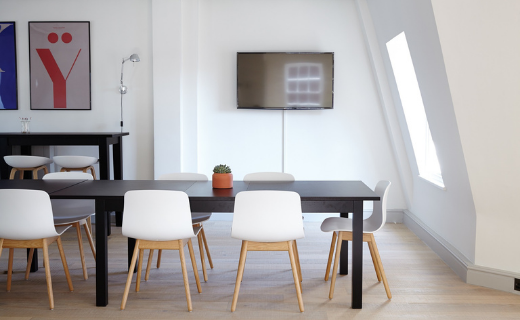
Format-Agnostic SCript-based INterAcTive Experience

THE PROJECT
The main objectives of the FascinatE project are:
- Format-agnostic scene capturing, which will be based on a multitude of networked cameras. For scene capturing, information from closely-positioned cameras needs to be fused. This requires the calibration of relative geometry as well as of brightness and colour.
- Preparation of the captured audiovisual data in order to facilitate interactivity and rendering on different devices controlled directly or indirectly by the viewer. This requires the use of many different types of metadata and knowledge and the extraction of additional descriptive metadata.
- Create an efficient, powerful end-to-end delivery architecture, where distributed signals are tailored to both the capabilities of the end device and the region of the scene to be displayed. Networking aspects require innovations too, since scene-related multimedia streams and metadata need to be transported over the network.
FascinatE will create an innovative end-to-end system and associated standards for future immersive and interactive TV services.
It will allow users to navigate around an ultra-high resolution video panorama, showing a live or recorded event, with matching accompanying audio.
The output will be adapted to their particular device, covering anything from a mobile handset to an immersive panoramic display with surround sound, delivering a true personalised multi-screen experience.
At the production side, this requires new scene capturing systems, where various video signals, together with metadata describing their relative alignment, constitute a novel layered scene representation. This represents a paradigm shift in production technology, from today’s format-specific view of an area selected by a cameraman to a format-agnostic representation of the whole scene.
Intelligent network components will tailor the transmitted data to suit the screen size and selected view for each terminal.
At the user terminal, novel interaction methods will allow viewers to choose either a script-driven view or to freely explore the scene themselves.
The main objectives of the project are:
- Format-agnostic scene capturing, which will be based on a multitude of networked cameras. For scene capturing, information from closely-positioned cameras needs to be fused. This requires the calibration of relative geometry as well as of brightness and colour.
- Preparation of the captured audiovisual data in order to facilitate interactivity and rendering on different devices controlled directly or indirectly by the viewer. This requires the use of many different types of metadata and knowledge and the extraction of additional descriptive metadata.
- Create an efficient, powerful end-to-end delivery architecture, where distributed signals are tailored to both the capabilities of the end device and the region of the scene to be displayed. Networking aspects require innovations too, since scene-related multimedia streams and metadata need to be transported over the network.
CONSORTIUM
A consolidated research group with a renowned academic and industrial profile.
- Joanneum Research Forschungs – Gesellschaft mbH (AT)
- Deutsche Thomson OHG (DE)
- Fraunhofer Gesellschaft – Heinrich Hertz Institute (DE)
- British Broadcasting Corporation (GB)
- Alcatel-Lucent Bell NV (BE)
- Arnold & Richter Cine Technik GmbH (DE)
- Universitat Politècnica de Catalunya (ES)
- The Interactive Institute (SE)
- algoWatt SpA(IT)
- University of Salford (GB)
- The Netherlands Organisation for Applied Scientific Research (NL)
SYNOSIS
COORDINATOR
Joanneum Research Forschungs – Gesellschaft mbH (Austria)
PROGRAM
START DATE
DURATION
42 months

